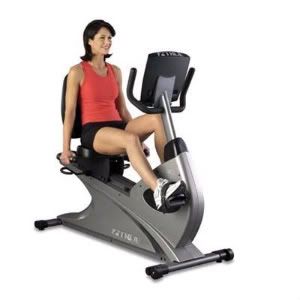 |
Cardio Interval Training |
In a long-term study of the health of the people of in the United States, the U.S. Public Health Service documented the chances of developing heart disease among various groups in the population. Long before the any symptoms appeared, epidemiological research could identify high-risk groups.
Among the highest risk factors are male sex, age over 35, cigarette smoking, high blood pressure, high levels of certain blood fats, and a family history of cardiovascular disorders.
Other researchers have added to this list another risk factor: the compulsive, hard-driving, highly anxious personality. The greater the number of severity, the greater the person’s overall risk.
These threats to the heart can be divided into two main categories: those beyond individual control, such as age, sex, and heredity, and those that can be controlled, avoided, or even eliminated. Among those in the second category are what cardiologists call “the triple threat.” These are the high blood pressure, cigarette smoking, and high cholesterol levels in the blood.
If you smoke a pack of cigarettes a day, your risk of having a heart attack is twice that of a nonsmoker. If you smoke, have hypertension, and eat a diet high in fats without any exercise at all, your risk is five times greater than normal.
The Healthy Heart
If these risk factors endanger the heart’s health, what enhances its well-being and improves its odds of working long and well?
Obviously, quitting cigarettes and eating a low-fat diet will help. The next best thing you can do for your heart’s sake is to give it what it needs: regular exercise or a complete cardio interval training.
The heart is a muscle, or, more accurately, a group or “package” of muscles, similar in many ways to the muscles of the arms and legs. And just as exercise strengthens and improves limb muscles, it enhances the health of the heart muscles as well.
Since World War II, several large-scale statistical studies have evaluated the relationship between physical activity and cardiovascular disease. One well-known survey compared 31,000 drivers and conductors of some bus companies. The more sedentary drivers had a significantly higher rate of heart disease than the conductors, who walked around the buses and climbed stairs to the upper level.
The why and how behind these statistics were bet explained by classic experiments with dogs whose coronary arteries were surgically narrowed to resemble those of humans with arteriosclerosis. Dogs who were exercised were had much better blood flow than those kept inactive.
The exercise seemed to stimulate the development of new connections between the impaired and the nearly normal blood vessels, so exercised dogs had a better blood supply to all the muscle tissue of the heart. The human heart reacts in the same way to provide blood to the portion that was damaged by the heart attack.
To enable the damaged heart muscle to heal, the heart relies on new small blood vessels for what is called collateral circulation. These new branches on the arterial tress can develop long before a heart attack — and can prevent a heart attack if the new network takes on enough of the function of the narrowed vessels.
With all these facts, it is now boiled down to a single question: What should be done in order to prevent such dilemmas?
Some studies showed that moderate exercise several times a week is more effective in building up these auxiliary pathways than extremely vigorous exercise done twice often.
The general rule is that exercise helps reduce the risk of harm to the heart. Some researches further attested the link between exercise and healthy heart based from the findings that the non-exercisers had a 49% greater risk of heart attack than the other people included in the study. The study attributed a third of that risk to sedentary lifestyle alone.
Hence, with employing the cardio interval training, you can absolutely expect positive results not only on areas that concerns your cardiovascular system but on the overall status of your health as well.
This particular activity that is definitely good for the heart is a cycle of “repeated segments” that is of intense nature. In this process, there is an interchange periods of recuperation. It can both be comprehensive activity and moderate motion.
Consequently, the benefits of merely engaging into this kind of activity can bring you more results that you have ever expected. These are:
1. The threats of heart attack are lessened, if not eliminated
2. Enhanced heart task
3. Increase metabolism, increase the chance of burning calories, therefore, assist you in losing weight
4. Improves lung capacity
5. Helps lessen or eliminate the cases of stress
Indeed, cardio interval training is the modern way of creating a healthy, happy heart and body.



